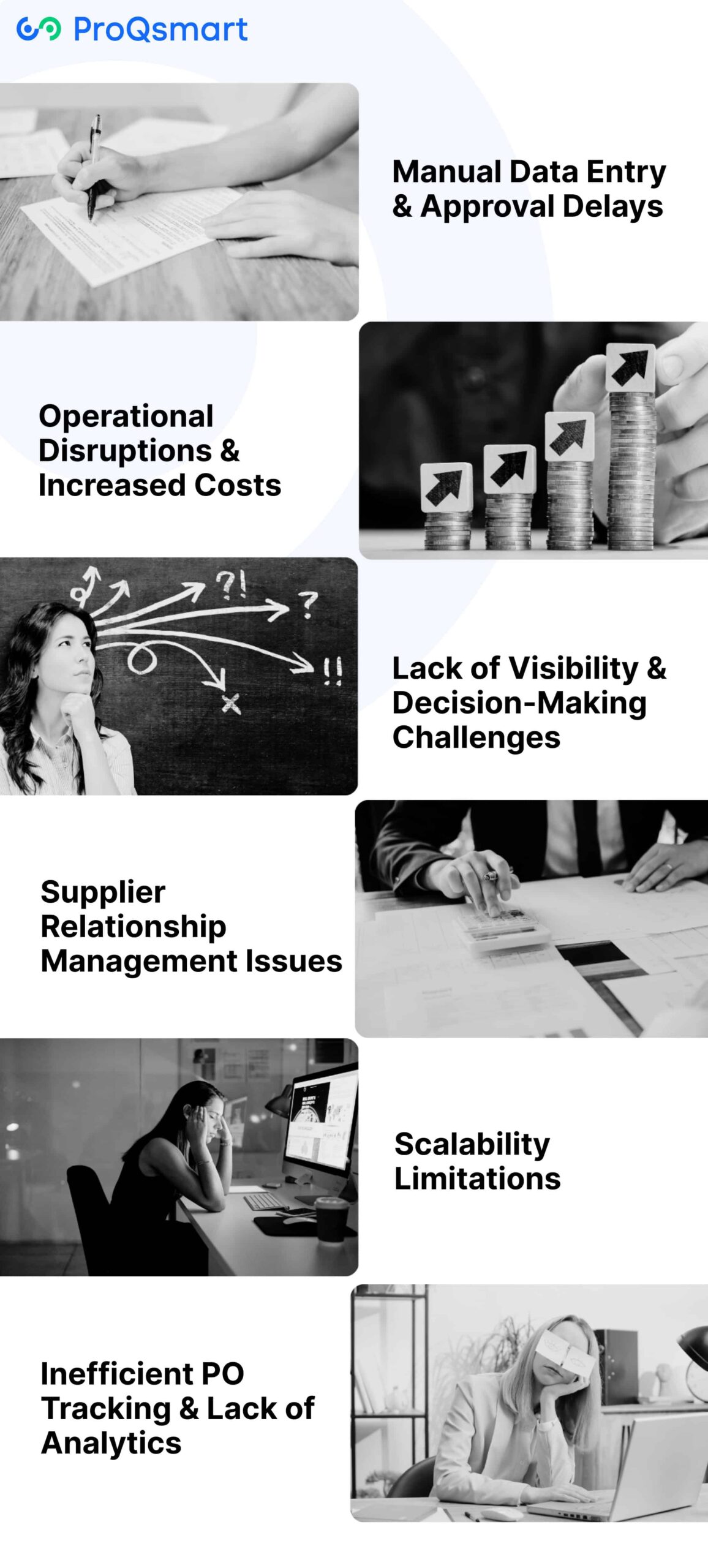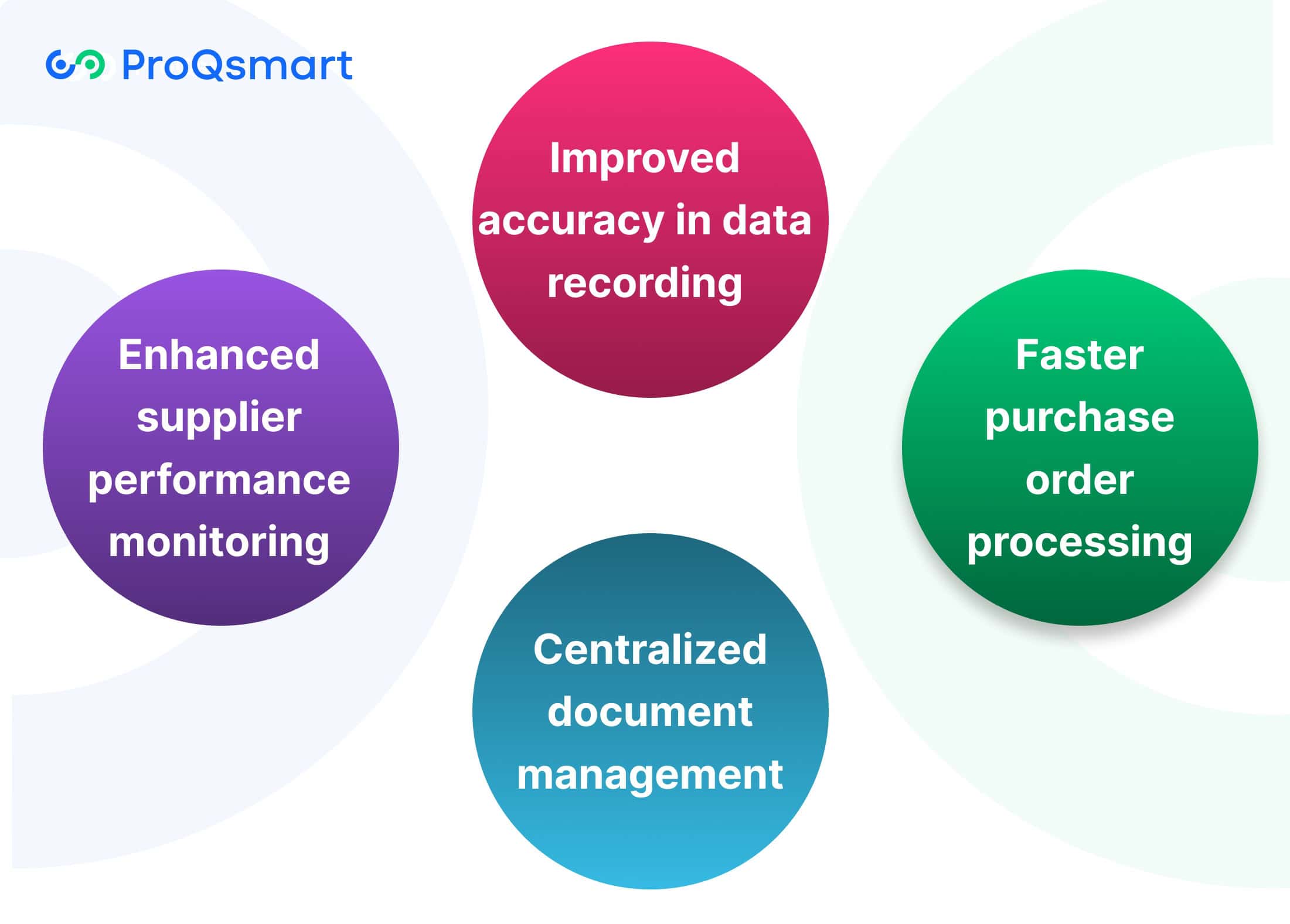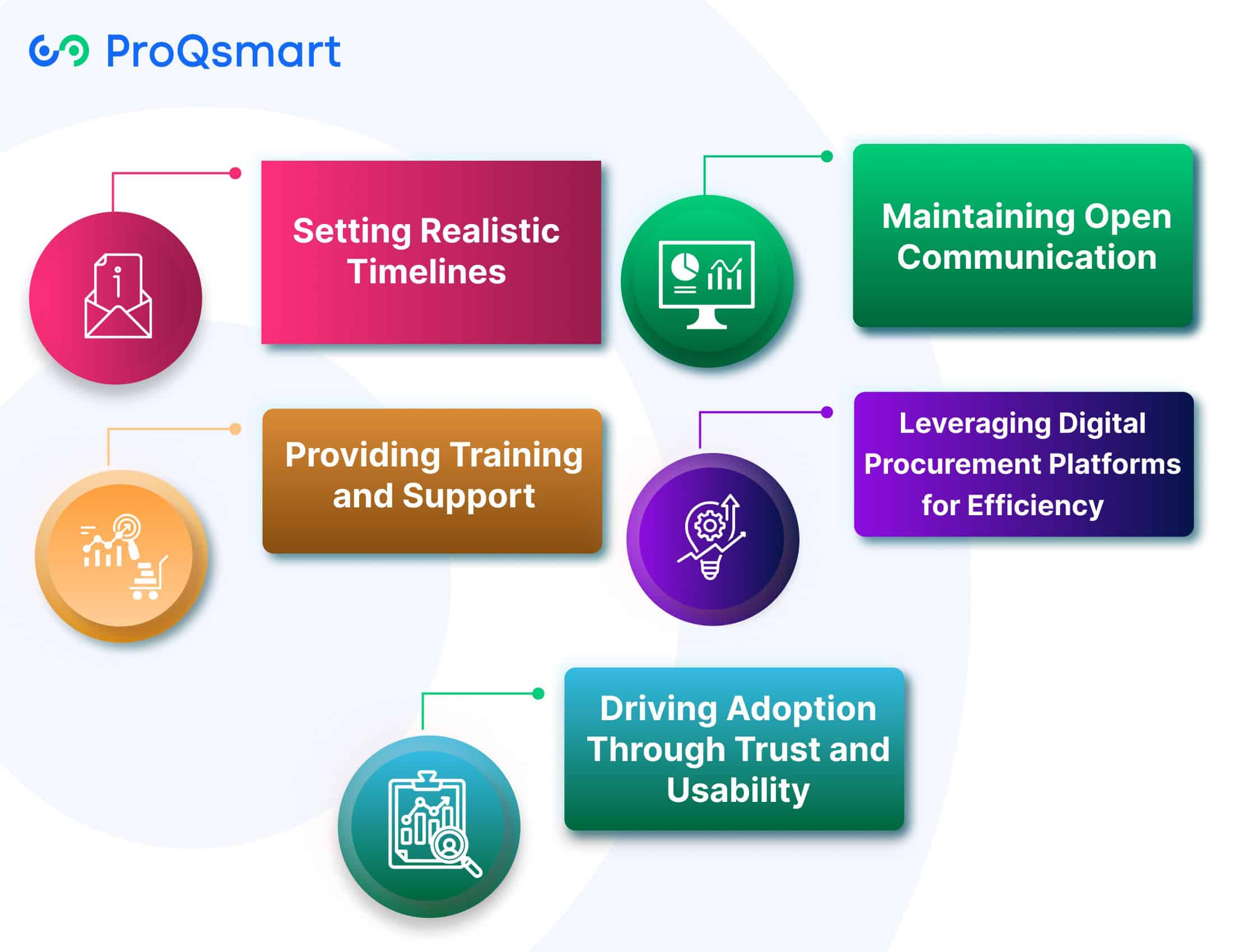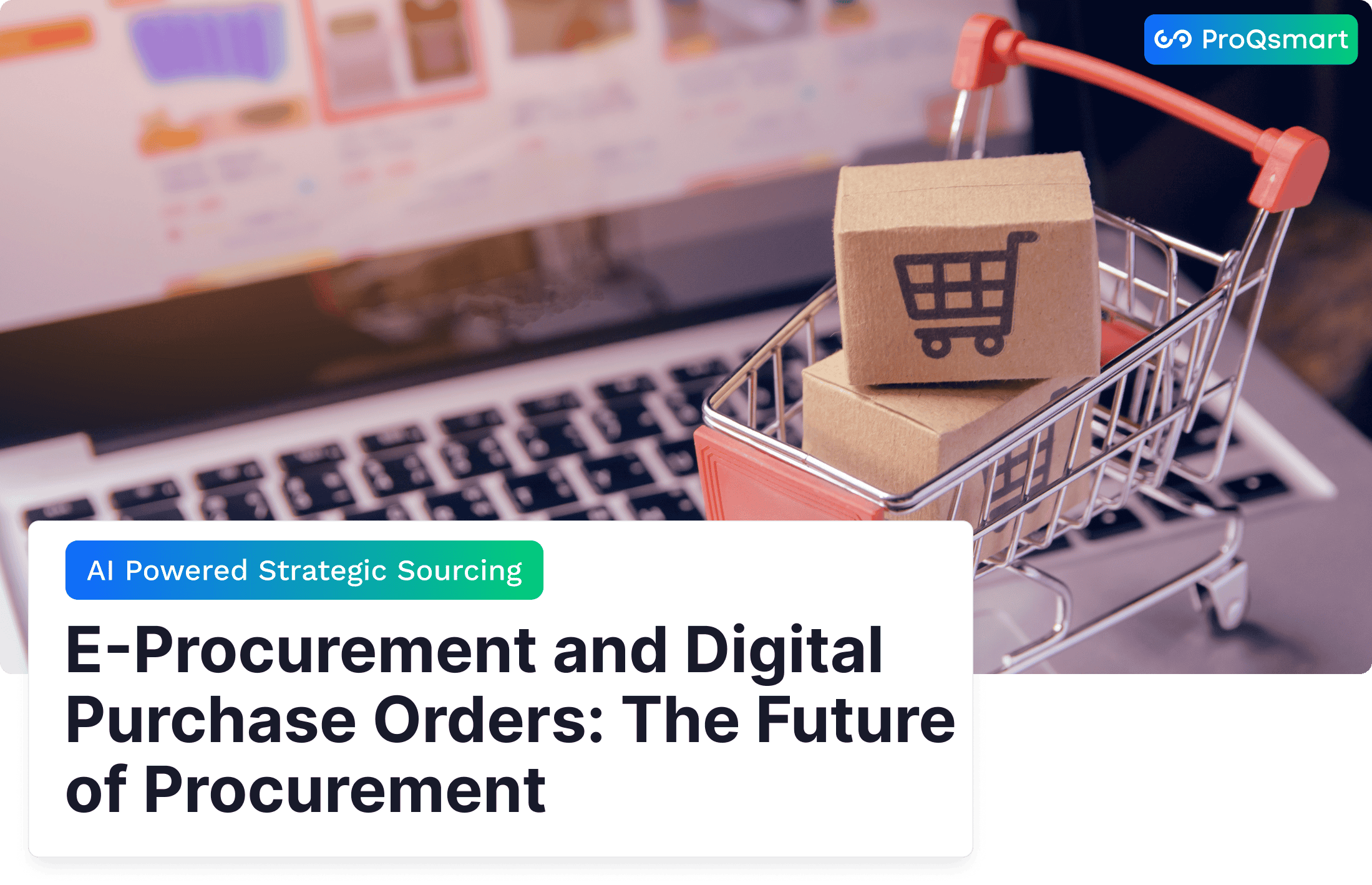The role of procurement has evolved beyond just cost control—it’s now a key driver of efficiency, agility, and strategic value. eProcurement has transformed purchase orders (POs) from a basic transactional tool into a dynamic asset that enhances procurement workflows, strengthens supplier relationships, and enables smarter decision-making.
By digitizing and automating POs, organizations gain real-time visibility into spending, improve process compliance, and accelerate procurement cycles. This shift not only eliminates manual inefficiencies but also empowers teams to focus on high-impact initiatives that drive business growth.
As procurement continues to adapt to changing market demands, leveraging digital POs within an integrated e-Procurement strategy is essential. The future belongs to organizations that embrace automation, data-driven insights, and seamless connectivity between procurement and enterprise systems.
Why Traditional Purchase Orders Fail

Manual Data Entry & Approval Delays
- Heavy reliance on manual inputs increases the risk of errors.
- Routing POs through multiple approval steps leads to an average two-week delivery time.
Operational Disruptions & Increased Costs
- Delays result in missed production deadlines, stockouts, and high inventory carrying costs.
- Miskeyed quantities or pricing errors impact budgets and timelines.
Lack of Visibility & Decision-Making Challenges
- No real-time tracking makes it difficult to monitor PO status or identify inefficiencies.
- Procurement managers struggle to recognize redundant purchases or optimize sourcing strategies.
Supplier Relationship Management Issues
- Tracking supplier performance and ensuring compliance is complex without digital tools.
- Communication gaps and misalignment hinder supplier collaboration.
Scalability Limitations
- Traditional methods fail as supplier count and transaction volume grow.
- Lack of flexibility leads to rework, wasted time, and strained supplier relationships.
Inefficient PO Tracking & Lack of Analytics
- Managing multiple purchase orders manually is cumbersome and inefficient.
- Without real-time analytics, organizations miss out on critical insights for optimizing workflows.
Digital Purchase Orders: Beyond Basic Automation
Digital purchase order systems have come a long way past just basic automation, providing smart features that take procurement efficiency to the next level. They integrate easily with systems such as ProQsmart.
These systems free up companies to address difficult, sophisticated purchasing undertakings with uncommon, almost automatic proficiency. With ProQsmart, purchase orders are automatically generated and sent out the moment they are approved.
It also enables electronic data interchange (EDI) and email communications with vendors, facilitating integrated workflows.
Advanced Features of Digital Purchase Order Systems
ProQsmart’s AI-driven platform empowers sourcing leaders to build stronger supplier relationships, streamline workflows with automation, and improve compliance with more accurate sourcing data.
These key capabilities significantly enable companies to bring their procurement processes into one centralized hub, streamlining procurement spend to stay within budgetary limits.
How Automated Workflows Reduce Repetitive Tasks
By automating workflows, agencies can remove the potential for human error when processing and approving invoices. For instance, with ProQsmart, you can scan in paper invoices and upload them to a centralized system, easily detecting duplicate charges.
ProQsmart takes it a step further by automating subcontractor management and tracking where capital expenditures are sourced from.
Benefits of Digital Purchase Orders

- Improved accuracy in data recording
- Faster purchase order processing
- Centralized document management
- Enhanced supplier performance monitoring
Real-Time Data Access
With real-time data from tools such as ProQsmart’s dashboard, procurement leaders can make smart, well-informed decisions.
With their purchase patterns, supplier performance, and spend trends at their fingertips, businesses can also ensure they are always strategically sourcing.
The Integration Imperative: Connecting Digital POs with ERP & S2P
Integrating digital purchase orders (POs) with Enterprise Resource Planning (ERP) and Source-to-Pay (S2P) systems is a cornerstone of effective procurement systems management. This integration supercharges procurement workflows and correspondingly enhances efficiency, as well as accuracy within the overall procurement process and business operations.
Importance of Integration with ERP Systems
Seamlessly connecting these digital POs to ERP systems allows departments to efficiently track procurement activity across departments. This integration removes the need to duplicate data entry, minimizes errors, and evidently makes sure that financial records are a real-time reflection of transaction activity.
Take ProQsmart, for instance – it connects easily with ERP systems, automating workflows to ensure users can quickly review and validate receipts right away. This further allows for both financial accountability and operational consistency.
Enhancing Visibility in S2P Processes
Integrated procurement systems further increase visibility by centralizing information throughout the S2P cycle. Using ProQsmart, companies can ensure procurement actions are tied to specific budgets, track supplier performance, and simplify the management of subcontractors.
These capabilities further leads to improved decision-making and compliance, while encouraging transparency.
Benefits of Integration: A Comparison
|
Feature |
Integrated Systems |
Standalone Solutions |
|---|---|---|
|
Data Accuracy |
High |
Moderate |
|
Workflow Automation |
Comprehensive |
Limited |
|
Real-Time Tracking |
Enabled |
Partially Supported |
|
Supplier Collaboration |
Enhanced |
Minimal |
Role of Data Analytics in Strategy Optimization
Data analytics, when combined with integration, offers valuable insights to help organizations make informed decisions and understand procurement trends. ProQsmart uses the power of AI to analyze procurement data and provide insights such as cost-saving strategies, supplier performance reviews, and capital expenditure planning.
Hence, having these analytics at their fingertips allows businesses to make informed, strategic decisions.
Advanced Use Cases: AI-Driven and Autonomous Procurement
Artificial intelligence (AI) is at the forefront of this transformation, automating complex tasks, enhancing decision-making, and driving efficiency. The future of procurement AI’s role in procurement has advanced from simple process automation to sophisticated tools involving predictive analytics and autonomous systems.
Through the infusion of AI, organizations will be able to unlock transformative operational efficiencies and cost savings.
Transforming Procurement Operations with AI
AI technologies are already revolutionizing the way procurement teams work. For instance, AI-driven invoicing has been shown to reduce invoice processing time by up to 70%, streamlining workflows and improving efficiency.
In another case, a facilities management company leveraged AI to optimize its supplier base, reducing the number of vendors by 60% while achieving significant cost savings. These examples highlight how AI enhances procurement by automating repetitive tasks, identifying patterns, and as well as analyzing large datasets for smarter decision-making.
Predictive Analytics: Forecasting and Supplier Performance
One of the places predictive analytics has the most impact is in procurement. One of the world’s largest shoe retailers uses AI to forecast demand for products during major shopping seasons, resulting in having the right amount of inventory on hand.
In the same vein, AI plays a role in evaluating supplier performance by analyzing past performance data to inform future decisions. ProQsmart, our AI-driven platform, empowers businesses with game-changing tools for continuous supplier performance monitoring and mitigating the risks of budget-driven procurement.
This greatly increases transparency and as well as compliance while improving efficiency.
Overcoming Resistance: The Buy-In Challenge for Digital Procurement
Making the switch to new digital procurement systems can sometimes bring about a resistance based on misunderstandings. The challenge is that many still feel these technologies are too complicated, expensive or disruptive to current workflows.
Some are concerned about losing control of procurement decisions, while others are afraid that automation will eliminate the role of human judgment. Overcoming these concerns begins with transparency. Highlight the ways that digital procurement improves efficiency and also reduces risk of errors.
Promote the real-time, data-driven insights it provides, which can significantly help dispel misconceptions and showcase its tangible value.
Engaging Stakeholders and Securing Buy-In
Ensuring stakeholder buy-in means addressing this challenge with the appropriate spirit of collaboration. Begin with the right stakeholders. Work with key decision makers from the start, and bring in examples of successful implementations or pilot programs to demonstrate outcomes.
Showcase how eProcurement platforms such as ProQsmart make procurement easier, with AI-driven insights, e-tendering, and automated workflows. Focus discussions around their most immediate pain points, be it a tightened budget or the desire to modernize compliance.
Strategies to Overcome Resistance
-
- Offer tailored training programs to build user confidence.
- Show return on investment with measurable outcomes, such as savings and value-added efficiencies.
- Encourage cross-departmental collaboration to align goals.
- Address questions with transparency and patience.
Change Management’s Role in Digital Procurement

Implementing digital procurement solutions requires more than just technology; it demands a well-structured procurement strategy to ensure seamless adoption. Resistance to change, lack of training, and uncertainty about new procurement processes can create roadblocks, making it essential to approach the transition with a clear plan.
1. Setting Realistic Timelines
Rushing digital transformation can overwhelm teams and lead to errors in the procurement process. Establishing phased rollouts for procurement software allows employees to gradually adapt to new systems. A step-by-step approach ensures that each stage of implementation is tested, feedback is collected, and necessary adjustments are made before moving forward.
2. Maintaining Open Communication
Transparency is key in helping employees understand the benefits of eProcurement systems. Engaging stakeholders early, addressing concerns, and maintaining an open dialogue on expectations foster a positive transition. Regular updates on progress, potential challenges, and also long-term goals ensure alignment across procurement teams.
3. Providing Training and Support
A robust training program ensures users can confidently navigate new procurement systems. Workshops, interactive tutorials, and hands-on training sessions help employees become comfortable with eProcurement and digital workflows. Additionally, continuous learning resources, such as knowledge bases and dedicated support teams, enable ongoing skill development.
4. Leveraging Digital Procurement Platforms for Efficiency
Modern eProcurement platforms streamline the entire procurement process by integrating budget tracking, supplier performance monitoring, and compliance tracking within a single hub. This level of visibility enhances decision-making, improves supplier management, and as well as ensures regulatory adherence.
5. Driving Adoption Through Trust and Usability
Successful adoption of digital procurement tools depends on how well they align with users’ needs. When platforms simplify tasks rather than complicate them, employees are more likely to embrace the change. By prioritizing ease of use, offering personalized support, and demonstrating clear benefits, organizations can foster long-term engagement with digital procurement solutions.
By implementing structured change management strategies, businesses can also ensure a smooth transition to digital procurement, maximizing efficiency and long-term success.
Conclusion
eProcurement is no longer just about automating transactions or workflows—it is fundamentally transforming how businesses source, procure, and manage global supply chains. The shift toward smart procurement requires advanced tools that are dynamic, analytical, and continuously optimizing in real time. Digital purchase orders, AI-driven insights, and seamless system integrations do more than improve efficiency; they enhance precision, flexibility, and strategic decision-making.
The path forward demands a sustained commitment to digital transformation and deep collaboration across procurement teams. It’s about building intelligent, data-driven procurement systems that not only streamline operations but also drive cost savings, stronger supplier relationships, and long-term sustainability.
Now is the time to modernize your procurement strategy and stay ahead in a rapidly evolving market. ProQsmart’s advanced eProcurement solutions empower businesses to optimize procurement processes, reduce inefficiencies, and make smarter sourcing decisions. Book a demo with ProQsmart today!




